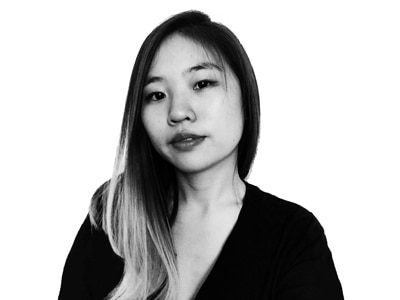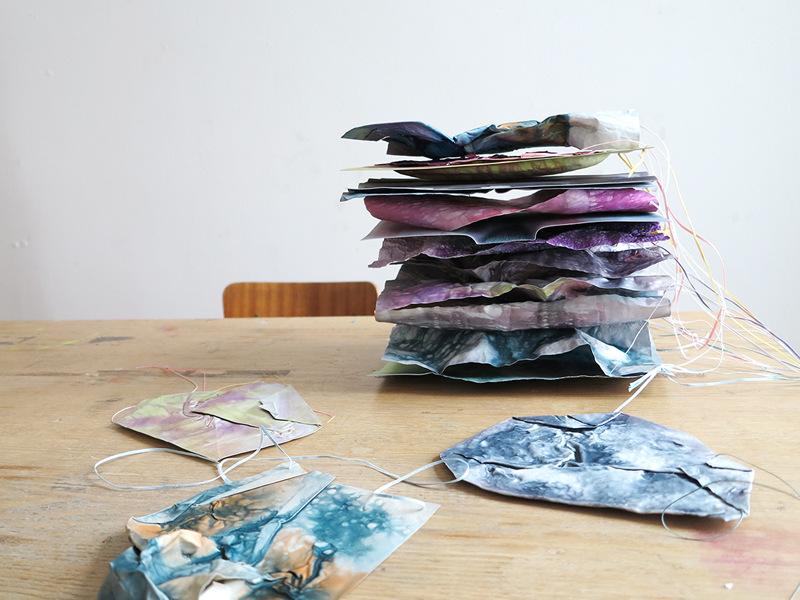
Anna Norrgrann, an emerging Swedish jewelry artist, is already making waves as the 2015 Graduate of the Year at Klimt02 and by exhibiting her collection of deceptively simple jewelry in the Netherlands, Spain, and China. In this interview, we talk about Anna’s favored medium of anodized aluminum, and transforming a mistake into a method.
Olivia Shih: You recently graduated from the HDK Academy of Design and Crafts, in Gothenburg, after studying with Karin Johansson. How has this education influenced the way you work and the work itself?
Anna Norrgrann: I think the education has made me more self-reliant in my work and made me trust my guts more, and this I am very grateful for. At HDK you are given a lot of freedom to explore and experiment and in many ways choose your own way to work. This freedom hasn’t always been easy to handle, especially not in the beginning, but in the long run it has had the good result and effect of helping me become a professional jewelry artist.
Karin Johansson, together with the other teachers and technicians, has been a great support in my work and for this I’m also very grateful. Not to forget, I’ve been lucky to have good classmates to discuss how to conquer problems you bump into related to your work, and other issues that come up as well.
Anodized aluminum appears to be your favored choice of medium. What possibilities do you see in aluminum in place of traditional precious metals?
Anna Norrgrann: I started working with aluminum just as a trial and then I realized there was something intriguing and challenging in this everyday metal, not only as a sketching material, but in itself. As I worked with the metal more and more, many possibilities appeared. For example I discovered the advantage of coloring the aluminum with the anodizing technique, or how I could transform the surface of the metal to make the color appear different. The low-density process gave me the possibility to work in a bigger scale; meanwhile, the anodizing process makes the surface very strong and this also enabled me to work with thin sheets of aluminum.
Let me put it like this: I did not expect as much from aluminum as from precious metals, and I think that was something that made me curious.
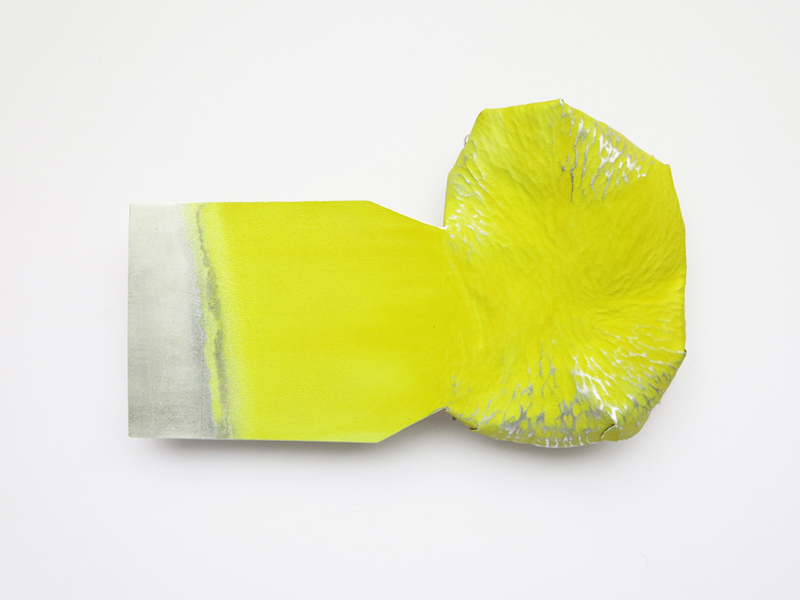
In your previous work, imPulse Palette, you create an intimate and obsessive experience with metal through texture and color. What provoked this collection of sensual work?
Anna Norrgrann: I was interested in repetition and what it would add to my work. To me, craft has a lot to do with repetition and I also enjoyed working in this monotone process; there was something about the rhythm and pulse that captured me. In some way I wanted to create spaces that you as a contemplator could rest in, in the same way I was resting while making them. I also learned how much the color changed in the different kinds of metals when their surfaces changed. This exploration in color was the playful part in my work and often gave me the fuel to continue and make more.
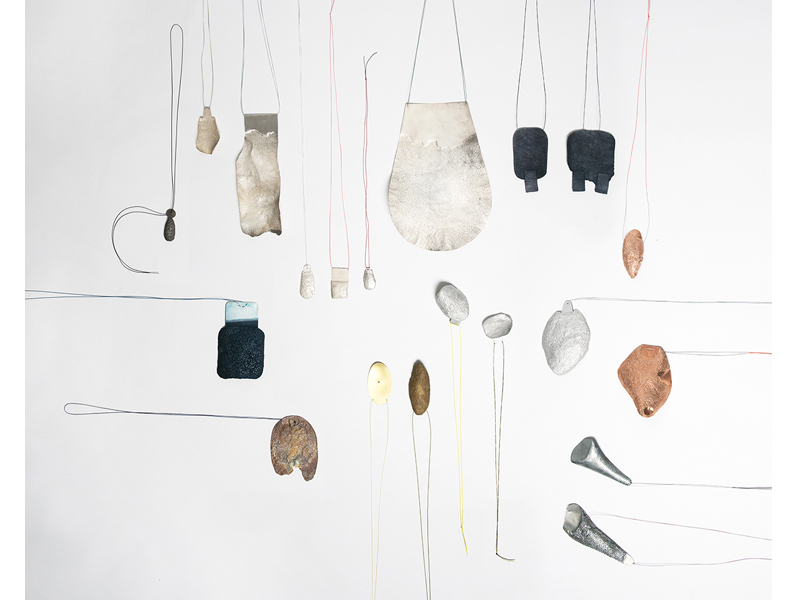
The Flow within and Flight from a Standard Format, your most recent collection of work, tackles the commonplace paper size A4 [a European sheet that measures 8.27 x 11.69 inches.—ed.]. What is it about this subject that drew you in?
Anna Norrgrann: In a way, this project is a continuation of my previous work about creating spaces, the frame, and how you choose size and shape. A4 is something we take for granted, almost like something we think is given by nature, but it is also made up. As I thought more and more about this shape, its meaning grew and I discovered new intellectual aspects to it.
I think it’s interesting how thinking and doing come together: When I started to work with A4-sized sheets of metal in my hands, new thing added to my understanding of the shape and my own relationship to it. In the same way that children play to understand the grownup world, I think making may sometimes have the same influence on the understanding of a subject, even though I wouldn’t draw a strong line between craft and play; craft is work.
I then wanted to investigate what would happen if A4 were put on the human body as a piece of jewelry, outside its natural context, if we then would look at it differently.
This last series also derives its strength from its simple working parameters. It is “just what it is” and refrains from emphasizing craft technique in jewelry. What are people’s reactions to this apparent simplicity?
Anna Norrgrann: Actually I have not seen this as a problem at all, more the opposite. Usually people don’t see that it’s actually metal and are very surprised and fascinated when I tell them. I think the response in general has been overwhelmingly positive when I have had the opportunity to show my work.
I’m usually not a person screaming out and expecting a lot of attention so in that way it suits me well to not try to make things more complicated than they need to be. Simplicity is very important. To me it stands for braveness and honesty and I think this is something I learned from my teachers at HDK, through both their work and their tutoring. Simplicity is not the same as primitive; in my opinion it’s sometimes the result of development. This being said, I would also like to point out that I’m not against complexity … or even kitsch.
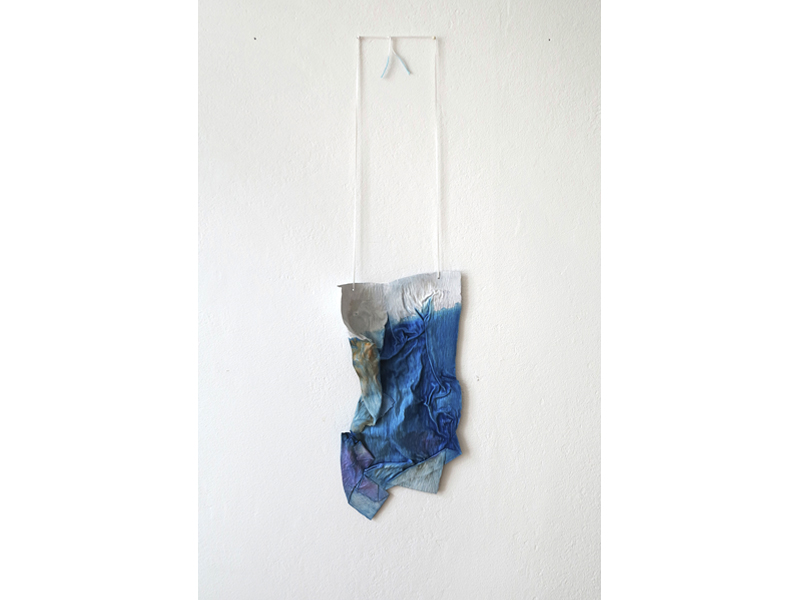
At times subtle and at times striking, color plays an essential role in your work and evokes a range of emotions. How did your relationship with color evolve?
Anna Norrgrann: I’m experimenting with color and because I don’t come from a painting background, I don’t have too much respect for color. I believe this is not a disadvantage. To me it’s a representation of moods, feelings, and fascination, among other things. Using the anodizing technique the way I do requires focus and quick decisions and it’s a great way to capture reflections and impulses. Sometimes when a certain color combination appears, I travel in time, remembering something I have forgotten. This process has a lot to with presence and sometimes the presence is very colorful and sometimes it’s monochrome.
In The Flow within and Flight from a Standard Format, you simulate the appearance of watercolors on metal. What inspired you to utilize stains and dripping?
Anna Norrgrann: I was inspired by one of my own mistakes, actually, and remember this one very well. I’m kind of a messy person sometimes, and so I once spilled on the metal sheet I was going to color and then watched this one drip slowly float out on the surface and make the mistake irrevocable. This was the turning point, and since that day I’ve been experimenting with the way the underlying surface makes the color flow in different directions on the limited A4 platform.
You have an upcoming exhibition at Oh My Blue in Venice. How did you first start working with the gallery?
Anna Norrgrann: They contacted me and we have been emailing back and forth about how to collaborate, and I’m now very happy to be able to show my work in their nice gallery. This is a great opportunity for me, as I’m a new professional jewelry artist. I also think they have been extraordinary engaged in giving response and feedback and it seems like they are truly committed to the jewelry art world.
What’s a day in your life now like?
Anna Norrgrann: I have a few part-time jobs and the rest of the time I spend in my studio with my colleagues. My part-time jobs include working as a silversmithing teacher to people with different kinds of mental disabilities, providing craft courses to women and children living in shelters due to domestic violence, and also sometimes working in a small design shop.
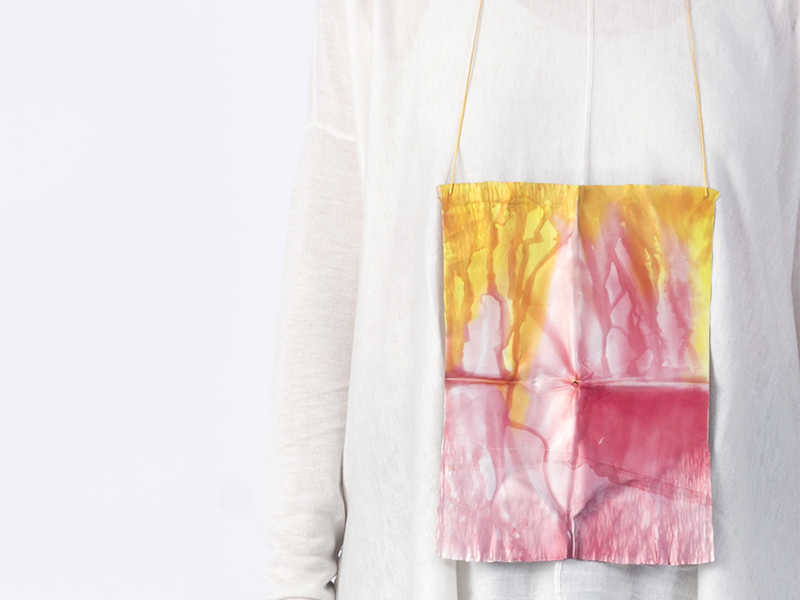
Have you recently seen or read anything that excited you?
Anna Norrgrann: Yes, many things. It might be an exhibition, a small text, or just someone reflecting on something. But I was really moved when I read an article about people who had fled from Syria and made it over the Mediterranean and what they had brought with them. At most they could take five items and besides necessary thing like medicines and clothes, one man, for example, took a flag, a girl a simple bracelet with pearls that someone had made for her as a gift. Another man took a memory card with pictures of friends and family, and if he would have drowned, he said, he would at least have had them closest to his heart. This, to me, is jewelry on another level.
As for books, I mostly read Swedish literature lately, but I would like to recommend two books that were recommended to me while I was working on my exam project: Rebecca Solnit’s A Field Guide to Getting Lost and Species of Spaces and Other Pieces, by Georges Perec.
Thank you.
The pieces in this exhibit are priced between US$77 and $935.
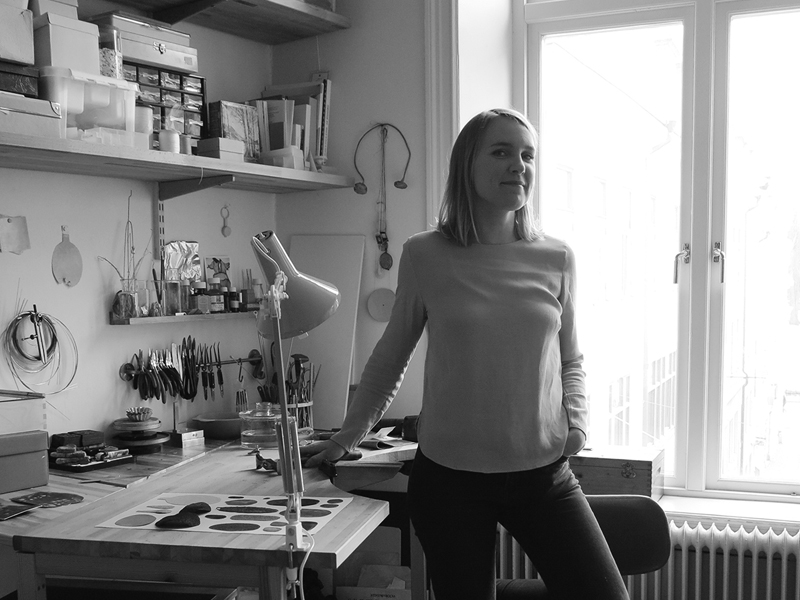
INDEX IMAGE: Anna Norrgrann, The Flow within and Flight from a Standard Size, 2015, necklaces, aluminum, each 297 x 210 mm, photo: artist
